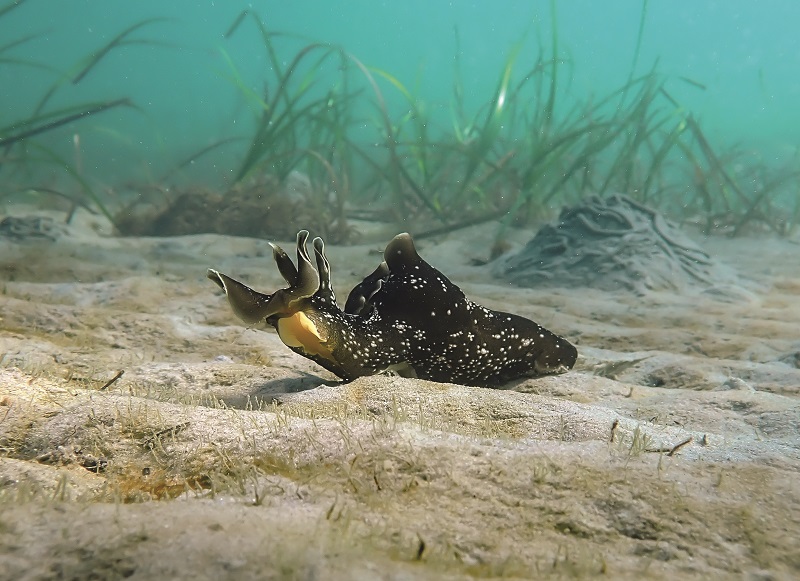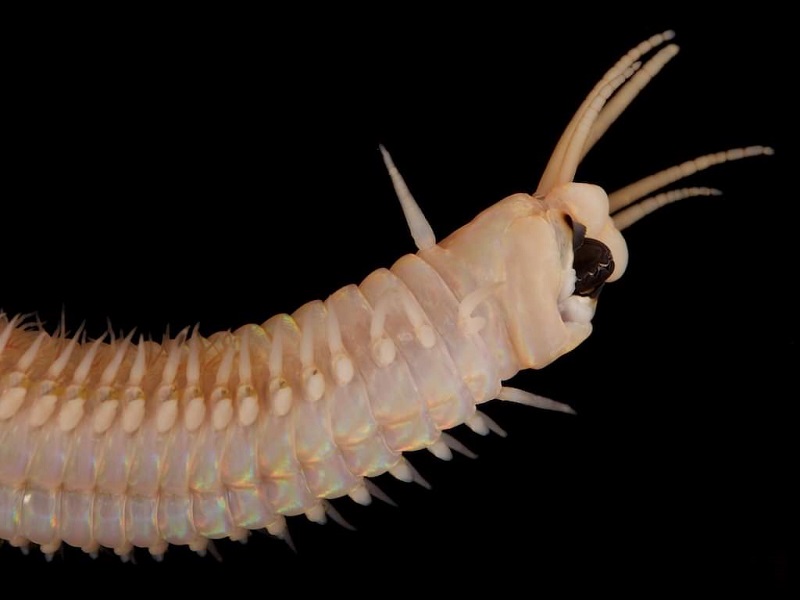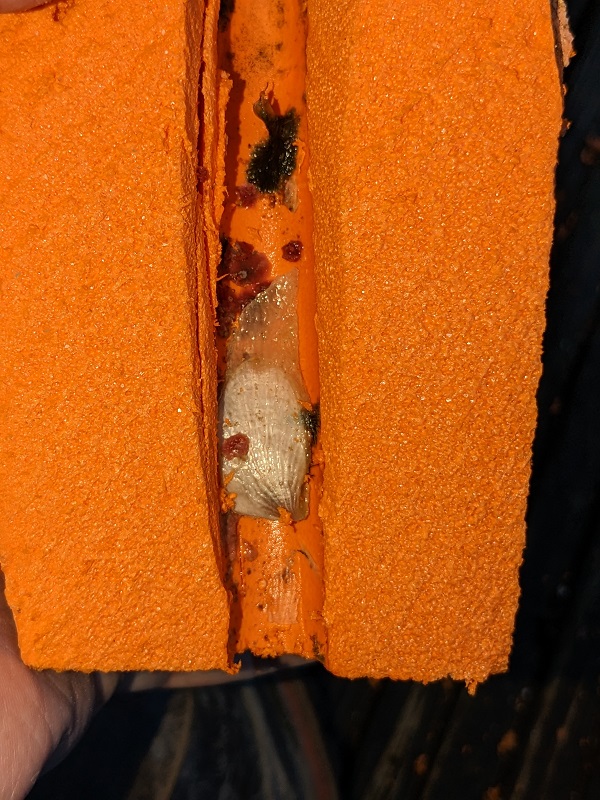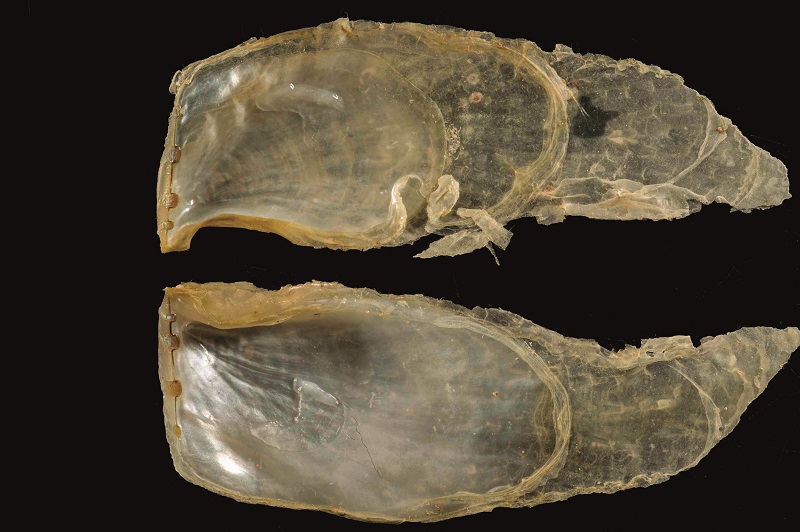As I snorkel alone at night in Portland Harbour on the south coast of England, or trudge along the strandline on Chesil Beach in the pouring rain and howling wind, I have never once questioned my sanity. Quite recently I’ve come to love searching for marine life in the harbour, observing individual behaviours, or discovering unfortunate animals that have been hurled unceremoniously onto the steep shingle of Chesil Beach. As my understanding and knowledge have grown, this hugely satisfying hobby has evolved into a pastime that has in some small way contributed towards the knowledge of our local coastal environment.
During the pandemic, I enrolled on an online Seasearch Observer course (available to complete beginners such as myself) to learn how to meaningfully record my sightings, and in 2022 I managed to submit nearly 40 records to Seasearch’s Lin Baldock for entry into the Seasearch database (see Box). Before I took up snorkelling, I would never have believed it possible to see the number and diversity of animals I have come across in Britain. These include: mating and egg-laying sea hares the size of my hand, and numerous sea slugs, including a small sacoglossan sea slug called Hermaea variopicta (this was like nothing I had ever seen before, with its pinkish leaf-like body and white face with pink-blushed cheeks); encounters with jellyfish including a tiny Turritopsis polycirrha that closely resembles the immortal jellyfish T. dohrnii; the difficult to identify Couch’s goby—now relatively common in Portland Harbour—and the elusive but mesmerizing spiny seahorse Hippocampus histrix.

Figure 1. The sea hare Aplysia punctata.
Whilst beachcombing one day in late December after another bout of rough weather, I found a plastic fishing net float, shaped like a small rugby ball, washed high and dry on Chesil Beach. On closer inspection, I saw that the hole through the centre of the float was well and truly blocked with what initially looked like a brown leathery case of some sort. At home, I placed the float in a tray of fresh seawater where I could take a close and careful look at its contents. Soon I saw something begin to wriggle, and slowly, the tiny head of a worm appeared. A little gentle persuasion with a wooden kebab stick, and a quite handsome-looking worm appeared, with what looked to me like four funky, long antennae and two tiny black eyes. After uploading the photo and few details to the Annelida-Polychaeta Facebook group, I soon had a response from Andrew Mackie (Honorary Research Fellow at Amgueddfa Cymru—National Museum of Wales). I kept the worm alive in seawater for the few days before I could get it to Andrew. This 15 cm-long worm turned out to be Eunice norvegica, a deep-sea worm commonly associated with the deep-water coral Lophelia pertusa.

Figure 2. Eunice norvegica, a deep-sea worm commonly associated with the deep-water coral Lophelia pertusa.
A remarkable encounter
I am extremely grateful to Andrew, who took some time to help me understand what I had discovered: ‘The discovery of a solitary Eunice norvegica living in the rope canal of a small fishing float is somewhat remarkable and provides a rare opportunity to examine a deeper water species that would not normally be encountered on the shore. It is to the credit of natural science enthusiasts and citizen scientists that such findings are publicized and made available to researchers. The animal was identified on the basis of standard taxonomic features featured in available taxonomic keys. However, the increasing recognition of species complexes (‘cryptic species’) among our fauna means such identifications cannot be taken for granted. Who knows what thorough morphological and molecular analysis may reveal?’
After a strong south-westerly gale in early January, I ventured round onto the rocky western shore of Portland where waves, spume, and spray were erupting at the rocky water’s edge. Lodged between two boulders was a faded orange North American fishing buoy. Blocking the tubes that ran the length of the polystyrene float were what looked like shells of some sort. I took the buoy home and after some delicate dissection with a panel saw, I managed to reveal several bivalve shells that I knew were not native (See Fig. 3). Knowing he would be excited to examine my find, I contacted local marine life expert Steve Trewhella. The buoy contained the shells of tropical marine molluscs from as far away as the Caribbean: tree oysters, the radial purse oyster Isognomon radiatus and a pen shell amongst others. The shells were sent to Anna Holmes, a specialist in marine molluscs at Amgueddfa Cymru—National Museum of Wales. I took the opportunity to ask Anna why, for her, citizen science is so crucial. ‘As a marine bivalve specialist who doesn’t get out much, Facebook provides a valuable viewing window for hundreds of beach finds. Many who post are keen to get an identification and sometimes those finds are of significant interest and importance, such as a new non-native species that should be monitored.’


Figure 3. Top: Fishing buoy cut open to reveal tropical molluscs including the radial purse oyster Isognomon radiatus (bottom, image © Steve Trewhella).
Another blustery day in early January provided one of my most memorable beachcombing forays. A large raft of seaweed and plastic debris at Chesil Cove had washed in overnight on the high tide. When I arrived the beach was covered in seaweed and plastic debris. Several large clusters of goose barnacles attached to Florida buoys, a couple of reasonably fresh-looking grey trigger fish, and several North American bait pots containing the pelagic isopods Idotea metallica were all fantastic finds (see Fig. 4). A few more steps and I thought my eyes were deceiving me: covered in egg wrack was a tiny juvenile loggerhead turtle, sadly deceased, but its shell still shining brightly. Dr Peter Richardson, Head of Ocean Recovery at the Marine Conservation Society, and Rod Penrose, the UK and Irish turtle database manager from Marine Environmental Monitoring, got in touch for more details. The turtle was collected and sent for post-mortem and we await the results. The shell will be returned to Dorset Wildlife Trust so that children and adults can find out what a loggerhead turtle shell looks and feels like. Knowing such creatures sometimes inhabit our waters would have certainly inspired me as a child.

Figure 4. Clockwise from top: Juvenile loggerhead turtle; grey trigger fish; pelagic isopods (Idotea metallica).
Box – Citizen science and the importance of underwater observations
Lin Baldock, Seasearch Dorset, Hampshire coordinator
The contribution of citizen science to many fields is becoming more important as cutbacks in government funding mean fewer ‘professional’ surveys are carried out.
Seasearch is an organization which trains volunteer divers and snorkellers to record seabed habitats and species following tried and tested protocols. The data submitted pass through a rigorous quality assurance procedure before being uploaded to national databases in a timely fashion, generally well within 18 months of collection.
Local contributors who are familiar with the conditions of their home ground are in an excellent position to comment on and record changes and unusual observations as they occur. By their nature, professional surveys are arranged a long time in advance, which can mean problems with unsuitable environmental conditions on the day—whereas a local observer can react immediately to collect vital information. In my experience, many Seasearchers and other citizen scientist are extremely well informed about their area with many specializing in certain groups of so-called ‘difficult’ taxa. It is essential that this source of expertise is harnessed in an effective way and the data made widely available for others to tap into.
An accessible discipline
I believe that anyone with a keen interest and a bit of dedication can contribute to marine science, even if it’s only in a small way. What has been encouraging and given me confidence to continue my interest is the acceptance by people with a huge amount of knowledge, who show sincere interest in some of the finds that I — and other like-minded people — have come across. I don’t think there are many other scientific disciplines or professions that the general public can access in such a positive way, and for me that makes marine biology, ocean science, and the MBA really special.
• Craig Pinder (craig_pinder@hotmail.com)
